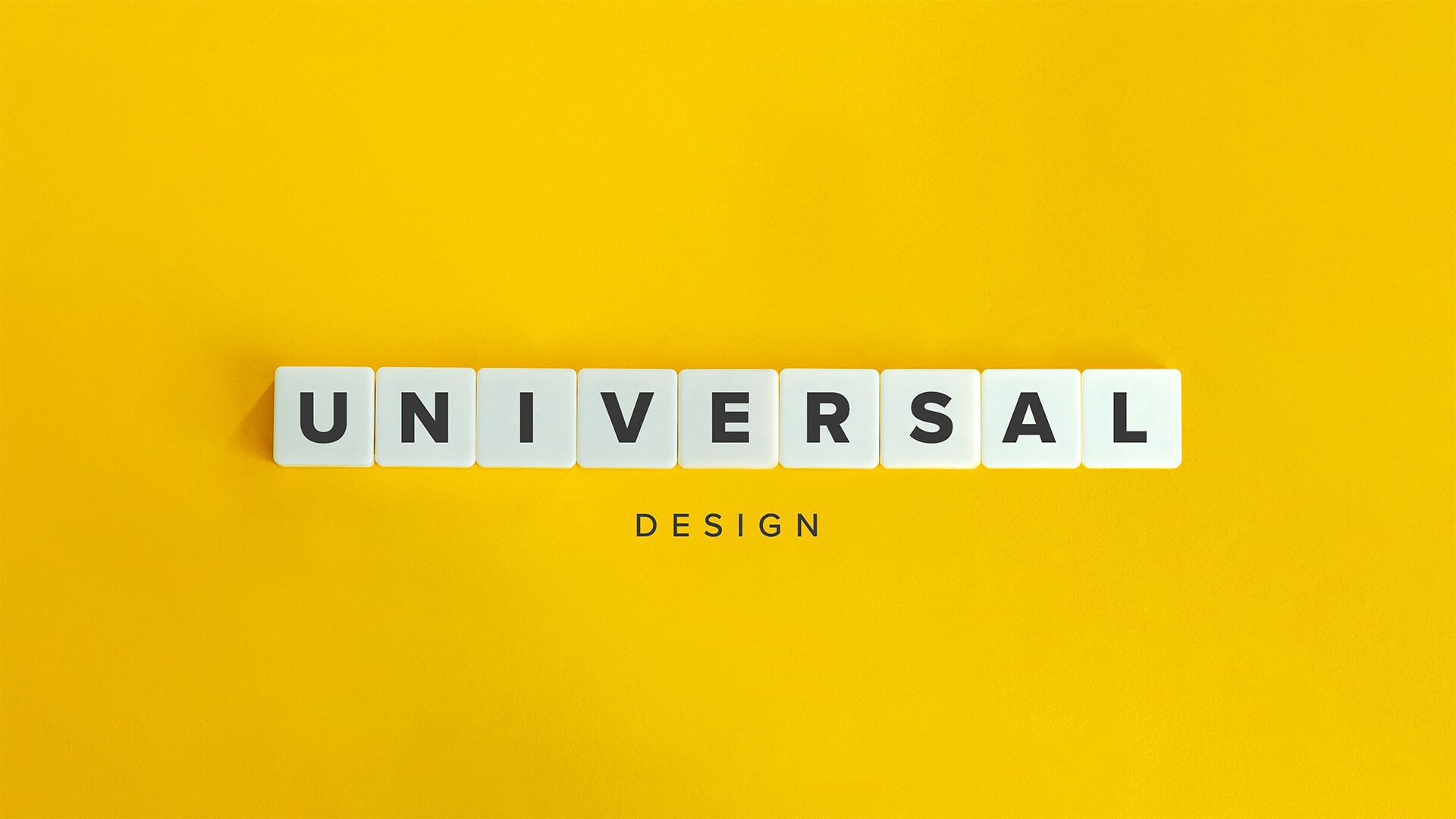5 min read
Universal Design and Its Role in Training
.jpg) Dr. Charles (Chip) Dye, Ph.D.
:
Jul 15, 2024 8:45:00 AM
Dr. Charles (Chip) Dye, Ph.D.
:
Jul 15, 2024 8:45:00 AM

 The broad adoption of hybrid work across the global workplace has presented a variety of challenges in addressing learning and development needs. Universal design provides an effective way to approach the unique challenges hybrid learning presents, while concurrently making all learning and development implementations more accessible and effective.
The broad adoption of hybrid work across the global workplace has presented a variety of challenges in addressing learning and development needs. Universal design provides an effective way to approach the unique challenges hybrid learning presents, while concurrently making all learning and development implementations more accessible and effective.
What is Universal Design?
Universal Design (UD) is an approach to design that seeks to create products, environments, and services that can be used by all people, to the greatest extent possible, without the need for adaptation or specialized design. The concept originates from architecture and urban planning and is based on seven principles initially developed by a working group of architects in 1977: equitable use, flexibility in use, simple and intuitive design, perceptible information, tolerance for error, low physical effort, and size and space for approach and use.
How is Universal Design applicable to Learning and Development?
The tenets of making a sidewalk or front door accessible to all people are directly analogous to making learning accessible to all learners. Dr. David Rose and Dr. Anne Meyer, working at the Center for Applied Special Technology (CAST), initially outlined the applicability of UD to learning in 2000 to address the needs of a diverse learning group.1 Early studies conducted in the first decade since its introduction found that:
- UD provides better learner outcomes
- The principal barrier to UD adoption is an understanding and articulation of the design principles by practitioners
- Implementation of UD methods and approaches to make learning more accessible are already in place, but not systematically included in the design approach.
How is Universal Design used in training today?
Today UD is employed in learning implementations to ensure that learning environments and materials are accessible and beneficial to the widest possible audience, through the tactical use of technology and a systematic approach to design that anticipates a diverse learning audience, including individuals with diverse capabilities ranging from limitations in cognition to literacy to access to technology. Implementing this means creating instructional experiences that are adaptable and accommodating to a variety of individual learner intentionality—adapting the experience to provide each learner with what they’re looking to get out of it, and, I would add, all while concurrently ensuring a consistent and meaningful alignment to organizational needs for the training.
Implementing UD in an instructional treatment requires a broad understanding of the principles, and some experience in
- Adapting learning treatments to different learning environments
- Instructional strategies and techniques (PBL, Case Based, Social Interaction, etc.)
- Capabilities and Alternatives of different L&D technologies .
The good news for practitioners new to UD is that research has found that exposure and discussion of UD amongst practitioners improves the UD implementation in the participants. UD resources are available in multiple formats and provide excellent resources for specific challenges.
Applying Universal Design Principles to Hybrid Virtual Learning Environments
As an emerging learning environment, hybrid learning poses several challenges that can be addressed with UD that enhance the inclusivity and effectiveness of learning and development for the hybrid workforce. By making modest changes in design and implementation, learners in every form of hybrid can enjoy meaningful learning experiences that advance the goals of the organization. There are additional benefits in repurposing learning assets in multiple formats that not only allow learners to choose the method that best suits their needs but also provide workforce performance support. Just like adoption of UD in pedestrian planning makes sidewalks better for everyone, incorporating features like closed captioning, screen reader compatibility, and allowing for adjustable text sizes can make virtual learning environments more accessible for all learners, whether in a dedicated office or on the road, catching the delivery from a departure gate.
How Can Universal Design Help a Multicultural Workforce in a Hybrid Setting?
Similarly, when a learning audience is composed of learners from multiple regions, UD can address specific multicultural needs while maintaining consistency of delivery. UD can play a pivotal role in ensuring that all employees can equally access and engage with learning materials regardless of cultural context through:
- Creating Inclusive Learning Materials – UD principles advocate for materials that accommodate diverse linguistic and cultural backgrounds. For instance, providing training documentation and e-learning modules in multiple languages can help non-native speakers better grasp the content. Furthermore, using culturally neutral examples and avoiding idiomatic language ensures that the material is comprehensible and relevant to a global audience.
- Ensuring Accessible Communication - Effective communication in a multicultural workforce involves acknowledging not just different languages but also addressing different communication styles. UD encourages the use of clear, straightforward language and multiple communication channels, such as email, instant messaging, and video conferencing, to cater to varied preferences. Providing real-time translation or subtitles during webinars and meetings ensures that language barriers do not hinder participation.
- Fostering an Inclusive Environment - A hybrid work environment with a multicultural audience often involves various time zones and work schedules. UD principles can help create flexible learning schedules and on-demand access to training materials. Recorded sessions with subtitles in different languages allow employees to engage with content at their own pace and time, reducing the stress associated with time zone differences and allowing for varied learning speeds.
- Enhancing Cultural Competence - UD also enhances a workforce's cultural competence by incorporating training materials that reflect a variety of cultural perspectives and case studies. This exposure helps employees understand and appreciate cultural differences, fostering a more inclusive and harmonious work environment.
By integrating Universal Design principles, organizations can provide an effective learning experience across regions, learning ability, and environment. In so doing, UD has been shown to improve aggregate learning implementation effectiveness AND utility of training assets in the workplace.
Challenges in Implementing Universal Design
The most consistent barrier to implementation of UD is that it is often perceived as difficult. Certainly, UD requires more forethought and anticipation of limitations (both in the learner and in the environment), but implementation of UD principles in a design practice is mostly a matter of experience. Some of the most common experiential gaps are:
- Resource Constraints: Implementing Universal Design can require more time and financial resources (particularly early in adoption), which may be a barrier for many organizations. To overcome this, organizations can start small by incorporating basic UD principles and gradually expanding the adoption as resources allow and experience grows. Leveraging free and open-source tools can also help mitigate costs. For instance, using free screen recording software to create instructional videos or open-source learning management systems (LMS) that support accessibility features can be cost-effective ways to start.
- Lack of Training and Awareness: Educators and instructional designers may not be familiar with UD principles or how to apply them. Providing training and professional development opportunities focused on Universal Design can help bridge this knowledge gap. Peer collaboration and sharing best practices within the organization can also promote wider understanding and implementation. For example, organizing workshops on accessible design or creating internal forums where educators can share tips and resources can foster an inclusive design culture.
- Resistance to Change: Shifting to a UD approach may encounter resistance from stakeholders accustomed to more traditional methods—change is hard. To address this, organizations should highlight the benefits of UD, such as increased learner engagement and satisfaction, and demonstrate its positive impact through pilot programs or case studies. For instance, presenting data showing improved learner outcomes from a Universally Designed training pilot can build a compelling case for broader implementation.
The Future of Universal Design in Corporate Hybrid and Virtual Learning
As the corporate world increasingly adopts hybrid and virtual learning models, the role of UD is poised to become even more crucial. By prioritizing accessibility and inclusivity, corporations can create learning environments that cater to a broader spectrum of employees, ultimately leading to a more diverse and effective workforce. Future advancements in technology, such as AI and adaptive learning platforms, are likely to further enhance the application of UD principles, making it easier to create personalized learning experiences that meet the needs of all employees.
First Steps with Universal Design
For those new to UD, start by educating yourself on its principles and seeking out resources and communities that support UD design practices. Begin with small, manageable changes in your learning environments and instructional treatments, and continuously seek feedback from learners to identify areas for improvement. By taking these initial steps, you can build a foundation for creating more accessible and inclusive learning experiences.
UD offers a powerful framework for creating inclusive, accessible, and effective hybrid and virtual learning environments. By prioritizing the needs of a diverse workforce operating (and learning) in varied environments, organizations can ensure that all employees, regardless of their background or abilities, have opportunities to advance and achieve organizational goals through professional training. Implementing UD principles not only enhances learner engagement and satisfaction but also drives better performance and retention. As technology continues to advance, the possibilities for personalized, adaptive, and culturally competent learning experiences will expand, making UD more pertinent than ever.
In conclusion, embracing Universal Design is not just a commitment to accessibility and inclusivity; it's a strategic advantage that can foster innovation, collaboration, and growth within an organization across multiple learning populations and environments. By continuously educating themselves on UD principles, seeking feedback, and adapting to the ever-changing needs of their workforce, organizations can build a resilient high-performing workforce experienced in working in a variety of environments. Now is the time to act and integrate Universal Design into your corporate learning strategy, paving the way for a more inclusive and successful future.
Want some help integrating Universal Design into your training programs? Schedule a 30-minute strategy call with one of our Virtual Learning Experts today!
1. Meyer, A., & Rose, D. H. (2000). "Universal Design for Individual Differences." Educational Leadership, 58(3), 39-43.


